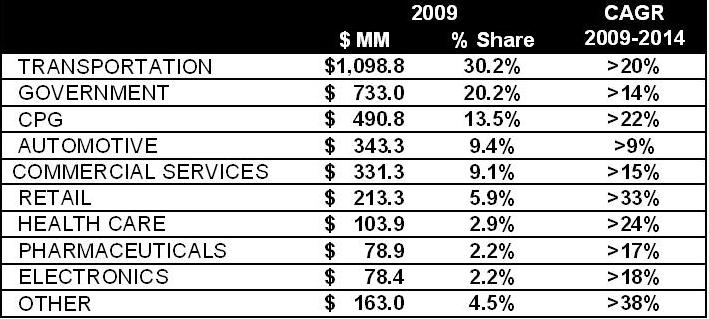Recent market indications indicate that radio frequency identification (RFID) is entering the next stage of technological evolution. These signs include the continuous expansion of many RFID projects, continuous deployment of infrastructure, deepening technology integration, and industry investment in this technology growth. Various applications with RFID technology as the core, such as supply chain management, inventory control, ticketing, ID card and e-commerce, are experiencing unprecedented rapid growth.
With the wider and deeper application of RFID, this industry has formed a complete value chain from manufacturing to sales. Although most of the large-scale RFID projects to date are still deployed in the Americas and Europe, as well as in the Middle East and Africa (EMEA), in the future, as the manufacturing business continues to be transferred to the Asia-Pacific region, the source label (attached at the original shipping point Tags on the Internet) are increasingly becoming standard procedures, and the Asia Pacific (APAC) market will eventually become the global RFID market hub.
Now, RFID end users are more aware of the advantages, limitations and multiple value propositions of the technology. In fact, most end users have realized that RFID is a complementary solution to the Automatic Identification and Data Acquisition System (AIDC). Some companies have also gradually increased their investment in technology, and began to integrate with other core systems, such as barcodes, sensors, anti-theft, data collection, or global positioning system (GPS), and try to integrate these in a shorter time Technology for trial or evaluation. From these developments, future users will take a broader view of the application of RFID in enterprises and the entire value chain, and will also begin to think about the future role and prospects of this technology.

Figure 1: The process of RFID technology from understanding and commitment to promoting wider adoption.
All RFID suppliers are happy to see the increasing demand today, and have begun to develop and launch products that can meet the needs of more complex applications in the future. In the past 18 months, almost all major RFID chip suppliers such as NXP, Alien, Impinj, etc. have launched new generation products. Although each of their chips has different frequencies or different markets, on the whole, the new chips have added new functions and solved many problems that the industry has faced in the past, such as: strengthening Security; information sharing and control, adding memory, programmable triggers or warning devices; integration and other technical support and solutions (such as sensors, multi-function tags, etc.).
VDC conducted a survey of 582 end users in 2010 and found that more than 80% of existing users want to expand the functionality of their RFID solutions and further integrate them into other core systems to allow RFID Covers more diverse application areas. The important results of this survey are as follows:
77% of WIP / component / assembly / equipment manufacturers stated that they needed a solution with larger memory to allow them to provide a larger number of product specifications.
68% of transportation / logistics suppliers expressed the hope that within the next three years, they will be able to integrate functions such as sensing / environmental monitoring into their existing RFID systems.
72% of existing RFID supply chain users have a strong preference for being able to share and control access to information stored in tags and other value chain participants. In addition, 89% of supply chain users also expressed the desire to strengthen security, and to further ensure the safety of the supply chain by improving authentication and anti-counterfeiting functions.
More than 60% of retailers currently using and evaluating RFID point out that within the next 24 to 48 months, they are likely to integrate existing solutions with other store systems, such as anti-theft systems.

Figure 2: Revenue of the global RFID vertical market. (Unit: USD million)
The development of RFID is full of more possibilities, which are expected to become the key to supporting this open market and its global value chain in the future. Today, depending on the technology, function settings, frequency and shape design used, ICs can account for about 30 to 65% of the cost of RFID transponders. As the market continues to expand, future products are bound to be more price sensitive. The next generation of advanced integrated circuits must also be cost-competitive and more productive. At the same time, the pace of chip development must also keep pace with the development of leading applications.
network cabinet is widely used for 19 inch network server enclosure perferated cabinet installing and placing of 19" international standard equipment and the system integration. Network Cabinets support large, modular network switches by providing additional space for cable management and side-to-side airflow solutions.
Network Cabinet,Electrical Cabinets,Wall Mount Server Cabinet,Wall Mount Server Cabinet,Wall Mount Cabinets,Electrical Distribution Cabinets
Sijee Optical Communication Technology Co.,Ltd , https://www.sijee-optical.com
